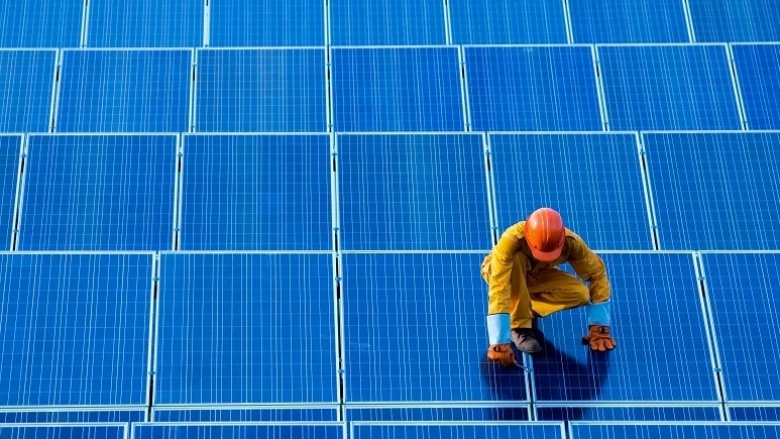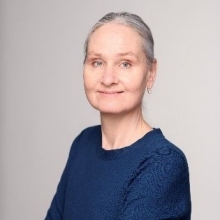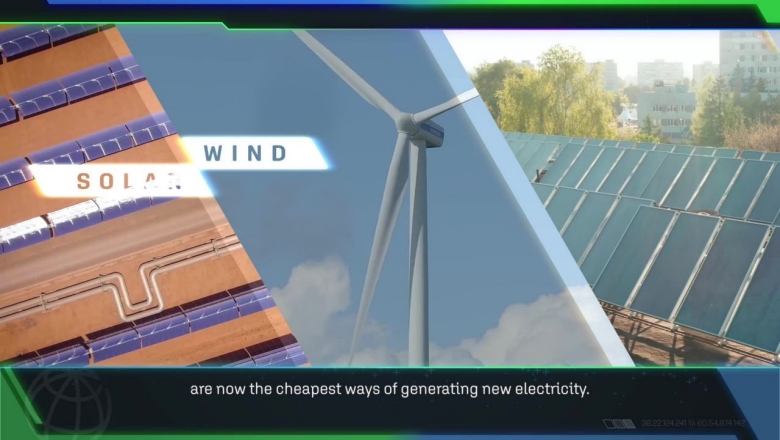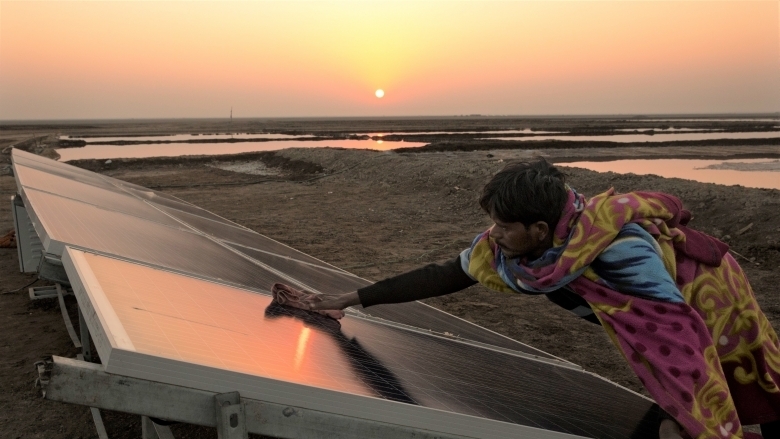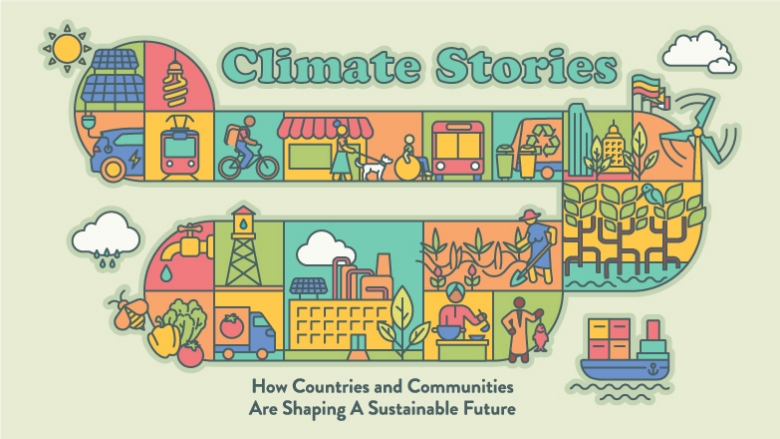Creating Sustainable Cities
A more sustainable world will need more sustainable cities. Today, cities are home to half of the world’s population. By 2050, over 70% of people on this planet will call cities home.
Shaping a low-carbon, resilient urban transition will entail:
- Transit-oriented development
- Better water supply and sanitation services
- Clean energy
- Circular economies that recycle waste
- Improved energy efficiency through higher construction standards or retrofitting existing buildings
- Enhancing resilience
“We are looking at ways to use nature-based solutions like mangroves for flood risk management and to build resilience in cities. All these things are important for our future climate, but also for quality of life in urban areas,” said Anna Wellenstein, Sustainable Development Director for Latin America and the Caribbean.
In Mozambique, the Cities and Climate Change Project includes a stormwater drainage system with 11 kilometers of canals and flood control systems to prevent flooding, strengthening resilience to weather-related hazards and helped the port city of Beira recover quickly from the devastating cyclones Idai and Kenneth.
In rapidly urbanizing Vietnam, the Vietnam Urban Upgrading Project improved water and sewage connections, roads, sewers, lakes, canals and bridges, benefiting 7.5 million urban poor.
IFC’s internationally recognized green building certification system, EDGE, certified over 16 million square meters of floor area around the globe by the end of 2020.
The Bank will also help cities and towns access more financing, along with tools and support to integrate risk in urban planning and land use.
Manufacturing
Manufacturing, especially the production of base materials such as chemicals, steel and cement, will require new technologies to rapidly and affordably transition to low-carbon development.
Electrification of industry would increase energy efficiency, and if powered by renewables or green hydrogen, would reduce GHG emissions significantly and play an important role in the energy transition.
The Bank Group is supporting eco-industrial parks in several countries including Bangladesh, where the Private Investment and Digital Entrepreneurship Project expects to create 150,000 new jobs, attract $3.7 billion in private sector investment, include 150 companies using green and resilient services and facilities, and avoid 30,000 tonnes/year of GHG emissions.
The first-ever blue loan -- to promote sustainable use of ocean resources – will help a global plastic resin manufacturer recycle 50 billion plastic bottles annually by 2025 in four Asian countries and one Latin American country.
The World Bank will help countries develop policies that promote low-carbon and resilient growth while making them more competitive. IFC and MIGA will apply low-carbon principles to investments in heavy manufacturing and assess climate-related drivers in projects without financing any new coal-fired power plants.
Person using GPS-enabled sensor to track performance of machinery in rice paddy in Pakistan. Photo credit: Flore de Preneuf/World Bank.
A Green Transition for Agriculture, Food and Land Use
A healthy planet and a thriving food system will be needed to feed a projected 9.7 billion people by 2050. But today’s unsustainable agricultural production practices cause high GHG emissions, forest and biodiversity loss, land degradation, water depletion, pollution and disease.
To tackle food insecurity and protect forests, climate-smart agriculture and nature-based solutions will need to be scaled up.
“New technologies play a key role, and they need to receive more support because R&D in agriculture is small compared with the importance of the topic,” said World Bank Climate Change Lead Economist Stephane Hallegatte. “There is no silver bullet and much more that needs to happen, including healthier and more sustainable diets, better land-use management, well-enforced protection of natural areas, lower food waste and better food logistics.”
“One of the things we're pushing very hard is what we call the ‘triple win’ in agriculture, and that is to look for investments that would be climate resilient, reduce emissions and increase productivity simultaneously,” said John Roome, Director of Sustainable Development for the World Bank’s South Asia region.
In Colombia, for example, farmers are using a silvopastoral system combining grasses, small plants and herbs with shrubs and trees for animal nutrition and complementary uses. The practice has raised incomes by up to $523 per hectare per year and boosted milk productivity by an average of 36.2%.
To leverage technological solutions for the issue of food waste, in 2020, IFC invested in Apeel Sciences, which has developed a plant-derived coating to help growers, suppliers and retailers significantly extend the shelf life of fresh fruits and vegetables, reducing losses and the need for refrigeration.
The Bank Group will support countries to transform agriculture and food systems while moving toward food security as an urgent global priority. Preserving forests and natural capital more generally is a key aspect of this transition.
“There is little disagreement over the need to enable a recovery that is fairer, safer, and more sustainable,” said Richard Damania, World Bank Chief Economist for Sustainable Development. “The choices governments make today on how they restart their economies will have long-term consequences that will shape their development for decades”.
To find out more about how these low-carbon transitions are taking place, as well as other transformative policies, innovations and markets that are delivering low-carbon, resilient solutions, tune in to Innovate4Climate (May 25-27, 2021), the World Bank Group’s flagship annual climate event. Attendance is free but registration is required.
